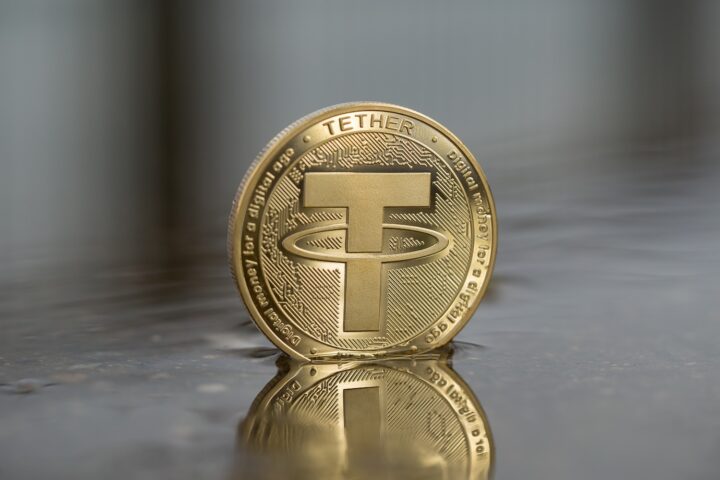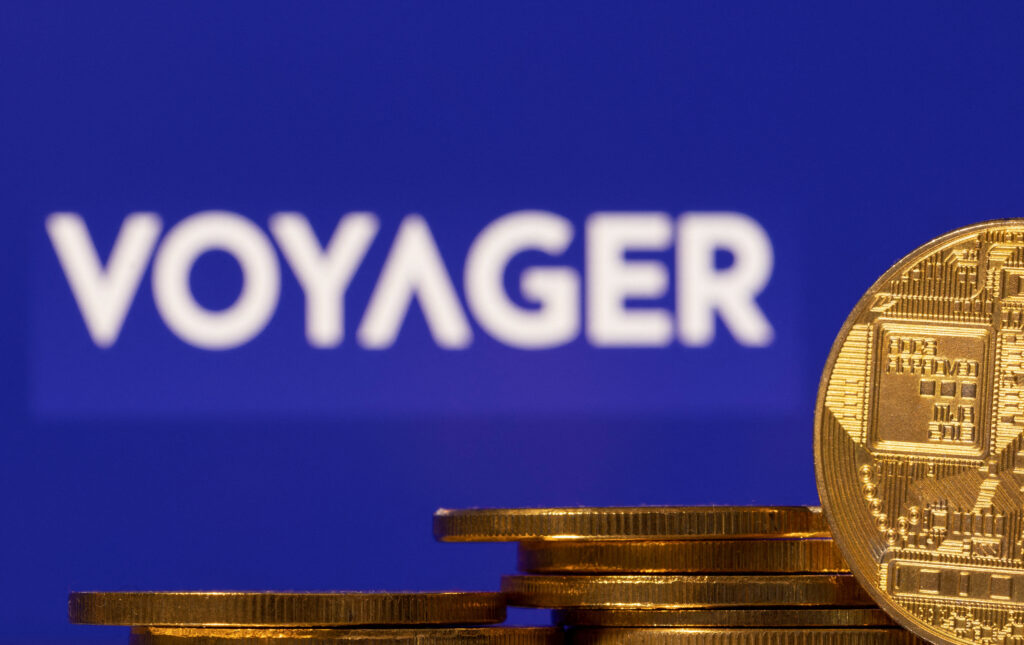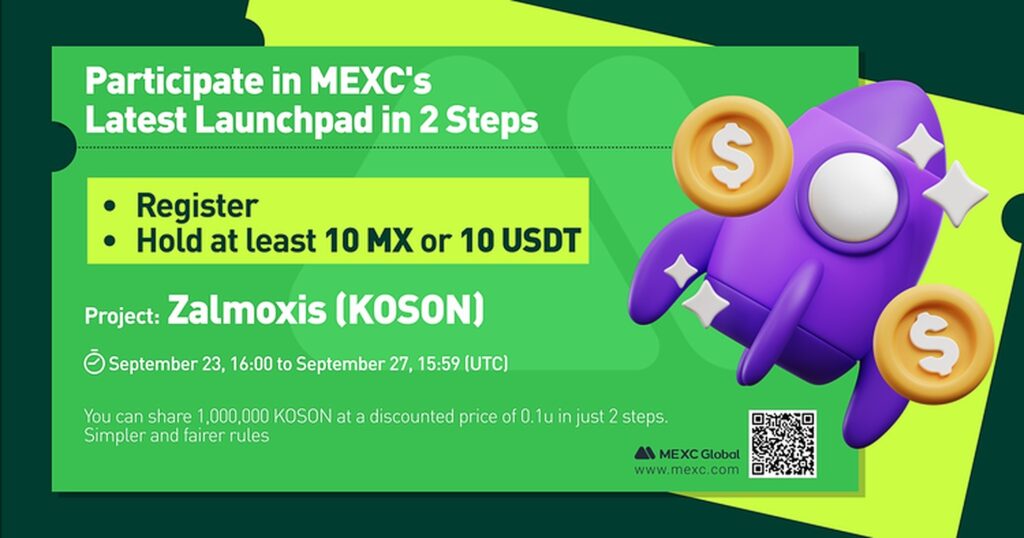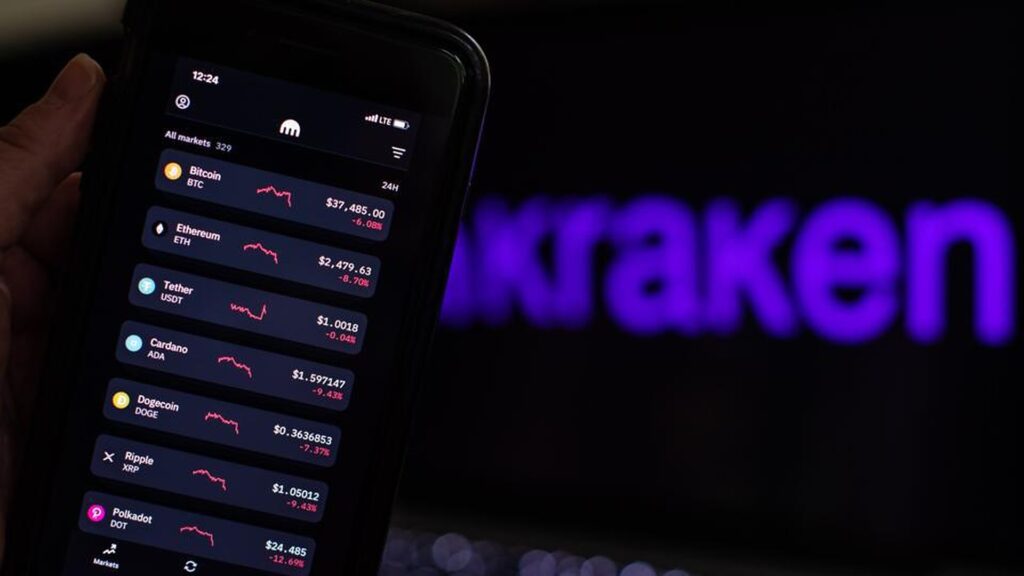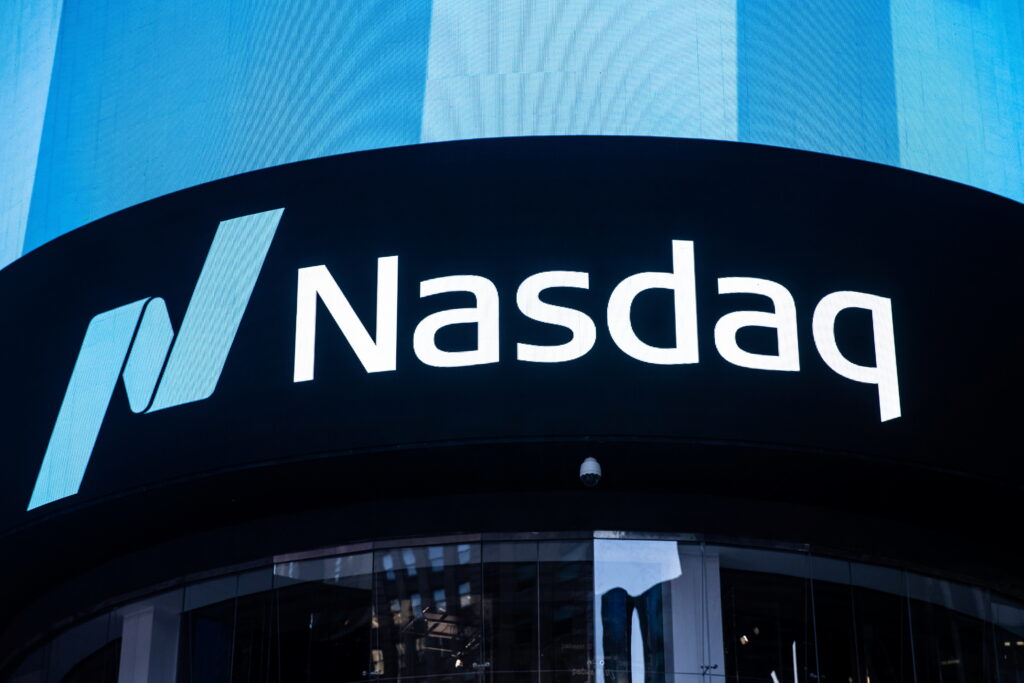Singapore, Singapore, 26th September, 2022, Chainwire
DeFiChain, the world’s leading blockchain on the Bitcoin network dedicated to bringing decentralized financial applications and services to everyone, today announces the listing of its DFI token on Gate.io, one of the world’s leading cryptocurrency exchanges. This is a major step in DeFiChain’s mission to make DFI accessible to investors worldwide.
Gate.io is one of the world’s biggest exchanges and supports the most cryptocurrencies of any exchange. The DFI token (ERC-20 version) will start trading on Gate.io at 10am UTC on September 26th. Initially, it will trade against USDT, though Gate.io could bring a DFI-BTC pair as well in the near future. The native version of DFI will become available on the platform in late October.
Buying the token on Gate.io will enable users to transfer DFI to any compatible wallet the user wants. It gives users access to the entire DeFiChain ecosystem including decentralized stock tokens. The DFI token is also available for trading on Huobi, Kucoin, Bybit (ERC-20 format), Bittrex, Bitrue and Hotbit. Each additional listing makes it easier for investors to enter the world of native decentralized finance on DeFiChain.
“We are extremely happy that the DFI token can now be traded on Gate.io and more and more people are able to access the no. 1 DeFi blockchain on Bitcoin.” said Benjamin Rauch, VP Marketing DeFiChain Accelerator.
The DFI token opens up the world to the DeFiChain ecosystem. It is at the core of all activities on the DeFiChain blockchain including:
- Providing liquidity in multiple pools
- Staking for blockchain consensus and security
- As collateral to mint or borrow stock tokens and the dUSD stablecoin
- As a reward token
- As the governance token of DeFiChain
As the only blockchain to offer decentralized assets on the Bitcoin network, DeFiChain offers users flexibility and benefits of decentralization. Users can mint and trade dTokens to get price exposure to stocks and ETFs without leaving the DeFi ecosystem. They can also buy dTokens – even in fractional pieces – on the DeFiChain DEX.
DeFiChain is a fully decentralized blockchain with on-chain governance. Since its mainnet launch in May 2020, the project has seen an enthusiastic involvement from the community in almost all aspects of the blockchain, from masternodes, projects, tools, governance, economic ideas, to code governance. Its codebase has been developed in an open source manner, and widely peer-reviewed and discussed by many.
About DeFiChain
DeFiChain is a decentralized Proof-of-Stake blockchain created as a hard fork of the Bitcoin network to enable advanced DeFi applications. It is dedicated to enabling fast, intelligent, and transparent decentralized financial services. DeFiChain offers liquidity mining, staking, decentralized assets, and decentralized loans. The DeFiChain Foundation’s mission is to bring DeFi to the Bitcoin ecosystem.
For more information, visit: Website | Twitter | Discord | GitHub
Contact
- Benjamin Rauch
- press@defichain-ac.com
Follow Crypto Intelligence on Google News to never miss a story
Tokyo, Japan, 26th September, 2022, Chainwire
CROOZ, Inc. (Listed on Tokyo Stock Exchange Standard Market; Head office: Shibuya-Ku, Tokyo; CEO: Koji Obuchi; hereinafter: CROOZ) has announced that the blockchain game known as “PROJECT XENO” under development by CROOZ is going to collaborate with Floyd Mayweather Jr. who is a former professional boxing world champion in five weight classes.
Collaboration with Floyd Mayweather Jr.
As announced earlier, the token that is published by EPOCH FACTORY and used in “PROJECT XENO” is just about to be listed on the Cryptocurrency exchange “MEXC Global” on 3rd of Oct.
“PROJECT XENO” is going to launch the first auction and for this memorial event, the project will collaborate with Floyd Mayweather Jr. The company will hold an NFT auction, including special limited Mayweather characters. Prizes for the participation will also be distributed for winners.
For further information about the collaboration, please visit following URL:
https://project-xeno.com/content/collaboration_mayweather/
For further information about the first auction, please visit following URL: https://project-xeno.com/auction-nft/
Upcoming in-game token listing (“GXE”) on MEXC Global on 3rd of Oct
The token “GXE” published by EPOCH FACTORY which will be used in “PROJECT XENO” a blockchain game is going to be listed on the Cryptocurrency exchange “MEXC Global” on 3rd of Oct. The PROJECT XENO team hopes that this special event will raise awareness to this project, and will continue to expand the community.
MEXC Global is known as a leading exchange of high performance and transaction matching technology. Founded in 2018 and currently caters to more than 6 million users in more than 70 countries around the world., MEXC Global aims to become the go-to platform for new traders and experienced investors as they move forward in their financial journey.
YouTuber “Hikaru” has been appointed as an ambassador
“PROJECT XENO” reached an agreement with The YouTuber “Hikaru”, one of the top and most popular YouTuber in Japan who has more than 4.8 million subscribers to become an ambassador.
This year, which is said to be the first year of Web3, is attracting increasing attention to blockchain and NFTs as the next generation of the World Wide Web. Hikaru, who continues to challenge a lot of new efforts, has been appointed as the ambassador for the project.. XENO will continue to take on new challenges that will create a new wind in the NFT game industry with Hikaru and provide new experiences to everyone.
“I am grateful to be appointed as the ambassador for “PROJECT XENO”, said Hikaru. “As some of you may know, my career as a YouTuber was started from a gaming channel. My starting point will challenge the industry that is attracting attention in the future. I will for sure fully enjoy these challenges! And I hope my viewers on YouTube and all parties related to the “PROJECT XENO” will also enjoy the project!” he adds.
About “PROJECT XENO”
PROJECT XENO is a tactics game with GameFi and e-sports aspects. Players who own NFT characters can acquire tokens and NFTs by playing this game. They can also trade NFTs seamlessly through the in-app wallet and marketplace. Their earnings are securely stored in the “General” in-app account.
For further information, please visit the web site or follow the official Twitter account.
- PROJECT XENO:http://project-xeno.com/
- PROJECT XENO Official Twitter(JP):https://twitter.com/PROJECTXENO_JP
- PROJECT XENO Official Twitter(ENG):https://twitter.com/PROJECTXENO_GLB
About CROOZ Blockchain Lab, Inc.
Crooz Blockchain Lab, Inc. is a company that focuses on blockchain technology and game development, and also a consolidated subsidiary of CROOZ, Inc.
About CROOZ, Inc.
https://crooz.co.jp CROOZ, Inc . is an “EC solution company” that develops multiple services related to the EC area, centered on “SHOPLIST.com by CROOZ”. Based on the know-how and achievements cultivated through “SHOPLIST.com by CROOZ”, we aim to become a leading company in the EC solutions field.
Inquiries
PR department, CROOZ, Inc.
Email: crooz_pr@crooz.co.jp
*The impact of this business on the consolidated earnings results of the current fiscal year is minor.
CROOZ, Inc.
Head Office :Ebisu SS building 1F, 4-3-14 Ebisu, Shibuya-Ku, Tokyo, JAPAN
Established :May 24th, 2001
Capital :460.16 million yen(as of the end of March in 2022)
Description :
-Formulate management strategies for group companies as a pure holding company
-Invest in subsidiaries
-Formulate management targets and support efforts to attain the targets
CROOZ Blockchain Lab, Inc.
Head Office :Ebisu SS building 1F, 4-3-14 Ebisu, Shibuya-Ku, Tokyo, JAPAN
Established :September 19th, 2018
Capital :40 million yen(including capital reserve. as of the end of March in 2022)
Description :Planning and consulting services in the FINTECH area and NFT game planning and operation services
Contact
- PR Team
- info@croozbl.co.jp
The crypto market had a busy week, with most of the crypto assets showing a high degree of fluctuation. The world’s oldest cryptocurrency, Bitcoin, dropped by over 4 per cent during the week while Ether shed over 8 per cent.
XRP witnessed a mega rally due to the positive news around the ripple lawsuit and jumped by 30 per cent during the week. The third consecutive rate hike announced by the US Federal Reserve will have a significant impact on the crypto market in the coming weeks.
Here are some important crypto developments of the week:
Iran’s tryst with CBDC
Iran’s central bank has started CBDC trials to turn banknotes into programmable currency. The crypto rial will be a digital version of the country’s fiat currency, which could be a game changer for the country’s digital economy.
Iran recently approved a detailed regulatory framework for cryptocurrency, and the authorities have also restarted the process of providing licenses to the crypto miners under the new law.
UK government introduces new bill for crypto
The United Kingdom’s government announced a new bill to counter money laundering and fraud by empowering the authorities to scrutinize the crypto assets deployed for illegal activities. The proposed legislation is expected to wipe out the dirty money from the country and prevent crypto-related fraud.
Coinbase gets a license to operate in the Netherlands
Crypto exchange Coinbase has secured a license to offer full spectrum crypto services in the Netherlands. The Dutch regulator approved the Nasdaq-listed crypto exchange to operate in the Netherlands.
The Netherlands is a booming market for crypto-related products, and more crypto companies are expected to explore the huge business potential of the European market shortly.
Follow Crypto Intelligence on Google News to never miss a story
Blockchain data and information service provider OKLink has strengthened its product development this year by releasing a series of upgrades to its product line, including several remarkable changes to its multi-blockchain explorers. These are viewed as critical steps that could help realize its parent entity OKG’s ambition of becoming a Web3 conglomerate.
A highlight of OKLink’s blockchain explorer pre- and post-Ethereum Merge
“We are confident of becoming a hub in the Web3 era as demand for blockchain data has increased substantially along with the constant development of the crypto world,” said Hermione, head of the multichain explorer product team at OKLink.
Hermione’s confidence is not groundless. Not long ago, she and her teammates witnessed a growth of four times in website traffic around the Ethereum Merge on Sept. 15. “We had prepared a countdown page for the Merge pretty early so that our users could always know when it would happen,” added Hermione. As the Merge drew near, the team’s efforts started to get noticed when more and more people began to post screenshots of the page here and there.
Another thing that Hermione felt delighted to talk about was that OKLink was the first to launch a reliable EthereumPoW (ETHW) explorer in the industry and is now the only official provider of blockchain explorer for ETHW, a forked blockchain of Ethereum after the Merge.
User-driven design and globalization: OKLink’s strategy for its multichain explorer development
It was no accident that the market gave positive feedback on OKLink’s products. “We’ve made tangible progress in developing and honing the multichain explorer this year due to our adopted strategy,” explained Hermione. “When the opinions from our users value more in the decision-making process, we’re encouraged to strive to make blockchain data understandable and accessible for a wide and varied audience interested in blockchain and crypto.”
The multichain explorer developed by OKLink incorporates a multitude of different blockchains into one search engine. Users can filter blocks, transactions and content by various criteria over blockchains. It currently supports 18 public blockchains, all of which are of broad concern in the market: Solana, Polygon and Avalanche, to name a few. Moreover, at least eight more explorers for public blockchains, such as Optimism, Arbitrum, Fantom and Aptos, are waiting to roll out.
Besides, the open APIs provided by OKLink’s multichain explorer have granted developers and researchers full access to the data contained on four blockchains. All blockchain explorers will support API access in the future. The API feature may aid numerous analytical queries, such as filtering, sorting and aggregating up-to-the-minute blockchain data. Businesses could also benefit from connectivity and query options that tailor and aggregate meaningful data in many ways to provide the best product for traders, custodians, exchanges and private investors at fast speeds and reliability.
Furthermore, for the convenience of users from around the globe, OKLinks multichain explorer could switch between 12 languages. And also, blockchain data is mostly well visualized in charts or diagrams to match users’ needs for comparing trends across blockchains.
The new normal: Multichain explorer as a vital entrance to the Web3 world
For any crypto market participant, whether a trader, a crypto wallet service provider or a crypto exchange, a blockchain explorer would be a must to understand what is happening on the blockchain in real-time.
There has been a broad consensus that search engines are now the critical Web2 infrastructure. And we are all getting used to finding data or information by “Googling” around. While in the era of Web3, most data would be stored on the blockchain, a ledger that contains all the transactions ever processed. Consequently, finding one particular data entry would be like looking for a needle in a haystack. The easier way to examine and explore on-chain data and information would be to use a blockchain explorer. This would also gradually become Web3 users’ new normal.
With the ongoing development of the blockchain industry and the introduction of new techniques (especially the interoperability between blockchains), a significant trend has formed where the multichain explorer is becoming more and more popular.
Just like dining in an all-you-can-eat restaurant, one may access data and information from various blockchains at the same time through the help of a multi-blockchain explorer. Furthermore, the service provider may add additional functions and features to the explorer, such as in-depth research and analysis of the crypto market.
About OKLink
As OKLink’s parent company, OKG is one of the earliest blockchain companies founded in China. It has now developed into a conglomerate and a leader in the blockchain industry. Established in 2013, OKG has been committed to the research and development and commercialization of blockchain technology. OKLink has been one of OKG’s subsidiaries dedicated to blockchain data and information services since 2018. Visit the website and Twitter for more information.
Voyager Digital Ltd Chief Financial Officer Ashwin Prithipaul is preparing to step down from his role within months of his appointment at the crypto lender that filed for bankruptcy in July.
The company said on Friday the finance head would resign after a “transition period” to pursue other opportunities, and that Chief Executive Officer Stephen Ehrlich will head the role in the interim.
Crypto lenders such as Voyager boomed during the COVID-19 pandemic, drawing depositors with high interest rates and easy access to loans rarely offered by traditional banks.
But inflation and subsequent rate hikes by the U.S. Federal Reserve led to a wide sell-off in the alternative asset class that dealt a heavy blow to several companies in the sector.
Digital asset exchange Coinbase Global Inc (COIN.O) and crypto lender BlockFi have been forced to cut jobs, while Singapore-based crypto hedge fund Three Arrows Capital has filed for bankruptcy.
Follow Crypto Intelligence on Google News to never miss a story
From 16:00 on Sept. 23 to 15:59 on Sept. 27 (UTC), the cryptocurrency trading platform MEXC will hold the latest event on its launchpad. The event project is Zalmoxis (KOSON), a AAA-level massively multiplayer online role-playing game (MMORPG) game developed by Wenmoon Studios Ltd.
It is known that MEXC’s launchpad is specially launched for MX holders, and MX holders can get the opportunity to participate in the project early. A total of 1 million KOSON will be released in this event, and the price will be 0.1 Tether (USDT). During the event, anyone with MX or USDT holdings of more than 10 USDT can sign up to participate.
The launchpad will still implement the sharing mechanism, and users can share KOSON by registering for this event. The maximum single exchange amount of KOSON is limited to 100,000 MX or 1,000USDT.
According to the introduction, Age Of Zalmoxis is a third-person MMORPG based on the Elrond blockchain built with Unreal Engine 5. The game is set in an ancient fantasy world inspired by European folklore with dungeons and thousands of quests. Players create characters and gain experience through combat, narrative content, events, crafting, dungeons and other means to grow and create a fantasy version of the kingdom of Dacia.
Players can obtain two different types of nonfungible token (NFT) characters for free from the marketplace or from guilds. Players can develop their game characters by gaining combat experience, creating different stories, winning tournaments and many other ways.
The game has two narrative models: adventures and organic content. The adventure narrative guides players to grow and obtain corresponding rewards according to the growth of the character; other players create unique new content through the newly generated content of the game. Players can also build different structures, such as castles, by acquiring a certain number of land plots. These can be used throughout the game or staked to generate tokens that drive the game economy.
In MEXC’s previous launchpads, several projects such as GameFi projects Genopets (GENE), CropBytes (CBX) and decentralized sharing platform Dtravel (TRVL) were launched. They all performed well after their launch on the secondary market.
In addition, according to the MEXC event announcement, KOSON will be launched on the secondary market after this event ends. KOSON’s trading and mining activities, namely the trade-to-earn mechanism, will be launched as well. During the event period, users who trade KOSON will receive KOSON rewards.
About MEXC
MEXC is the world’s leading cryptocurrency trading platform, providing one-stop cryptocurrency trading services for spot, exchange-traded funds, futures, staking, NFT Index, etc., and serving more than 10 million users worldwide. The core team has a solid background in traditional finance and has professional financial product logic and technical security guarantees in terms of cryptocurrency products and services. In October 2021, MEXC Global won the title of “Best Cryptocurrency Exchange in Asia.”
Currently, it supports the trading of more than 1,400 cryptocurrencies and is the trading platform with the fastest launch speed for new projects and the most tradable categories. Visit the website and blog for more information, and follow MEXC Global and M-Ventures & Labs.
Cryptocurrency exchange Coinbase Global Inc is facing a patent lawsuit related to its digital trading technology, brought by a crypto company whose digital token offering led to a settlement with U.S. securities regulators in 2019.
The lawsuit, filed Thursday by Veritaseum Capital LLC in Delaware federal court, claims Coinbase infringed a patent awarded to Veritaseum founder Reggie Middleton by the U.S. Patent and Trademark Office last December.
Veritaseum Capital accused several Coinbase services, including its blockchain infrastructure for validating transactions, of infringing the patent. It asked the court for at least $350 million in damages.
Coinbase, one of the world’s largest platforms for trading cryptocurrency, did not immediately respond to a request for comment on Friday.
Veritaseum formerly issued the token VERI. In 2019 Middleton and two of his Veritaseum entities paid the U.S. Securities and Exchange Commission more than $9.4 million, including a $1 million penalty against Middleton himself, to settle charges of a “fraudulent scheme” to sell the token in 2017 and 2018.
The SEC had accused them of misleading investors about demand for the tokens and manipulating their price, among other things. They agreed to the settlement without denying or admitting to the underlying charges.
Middleton and Veritaseum argued to a Brooklyn federal court earlier in 2019 that they did not make any fraudulent statements, that the tokens were not securities, and that trading at issue was “actually an effort by Mr. Middleton to test out a new online cryptocurrency exchange.”
Veritaseum’s website says it “builds blockchain-based, peer-to-peer capital markets as software on a global scale.” Thursday’s lawsuit accuses Coinbase features including its website, mobile app and Coinbase Cloud, Pay, and Wallet services of infringing a patent covering a secure method for processing digital-currency transactions.
Veritaseum Capital’s attorney Carl Brundidge of Brundidge Stanger said Friday that Coinbase was “uncooperative” when they tried to settle out of court.
Middleton and Veritaseum separately sued T-Mobile in 2020, alleging the telecom company’s security lapses led to hackers stealing $8.7 million in cryptocurrency from them. T-Mobile contested the claims, and the case was sent to arbitration in August.
Follow Crypto Intelligence on Google News to never miss a story
Cryptocurrency exchange Kraken has no plans to delist tokens the U.S. Securities and Exchange Commission has labeled as securities, or to register with the agency as a market intermediary, said incoming chief executive officer Dave Ripley on Thursday.
The stance of the San Francisco-based platform, which says it has more than nine million clients, underscores the challenges the securities regulator is facing in its effort to rein in the crypto industry.
Kraken, which made news earlier this year when it denied requests to block the digital wallet addresses of Russian users following the invasion of Ukraine, has long championed the libertarian values associated with cryptocurrency. Its new CEO has promised to stay the course on the company’s culture.
Kraken announced on Wednesday that its often-controversial co-founder Jesse Powell would step down and that Ripley, Kraken’s chief operating officer, will assume the CEO role after the firm hires a new COO.
Ripley will take the helm of Kraken not only at a time when the crypto market is facing a major rout, with bitcoin down nearly 60% this year, but also as the fast-growing industry has been at odds with regulators like the SEC.
Despite reports that the SEC is scrutinizing Coinbase for listing several tokens on its platform the regulator identified as securities in a July insider trading lawsuit, Kraken has no plans to remove those tokens from its exchange, Ripley said.
Ripley added Kraken also sees no reason to register with the SEC as an exchange because his company does not offer securities, despite calls from SEC chair gary gensler for crypto platforms to register.
“There are not any tokens out there that are securities that we’re interested in listing,” he said. “There could be some new token out there that becomes interesting and also happens to simultaneously be a security [and] in that case, we would potentially be interested in that path.”
In a summer when once-formidable players in the crypto market like Celsius Network and Voyager Digital filed for bankruptcy, and others like Coinbase announced layoffs, Kraken has managed to avoid the market downturn, and is now eyeing opportunities.
“To the extent that there are opportunities for M&A in this environment, and perhaps if it’s a company that is actually going through a bankruptcy process, then that’s a potential for us to consider for sure,” said Ripley, adding the company has not made any moves yet.
However, he said Kraken would consider acquisitions that bolster its product and tech portfolio, particularly as the exchange looks to broaden its offerings with a forthcoming platform for non-fungible tokens and banking services for institutional clients.
Follow Crypto Intelligence on Google News to never miss a story
Singapore, Singapore, 23rd September, 2022, Chainwire
BinaryX, a GameFi development platform, announced today the launch of CyberChess, one of the first free-to-play, play-and-earn auto chess strategy games in the P2E dominant GameFi space. CyberChess offers people on Web3.0 new entry points into the world of GameFi.
$500,000 worth in BNX Prize Pool and Heroes Giveaway for CyberChess Launch
To celebrate the launch, BinaryX will commence Season 1 of Ranked mode battles, where players will stand a chance to win up to $500,000 USD worth of prizes in the first 8 weeks of launch. Over the same period, BNX airdrops will be announced and given away via Discord and Twitter.
To get a headstart, players can also stand to receive additional 2 heroes and 2 skills when they enter the code ‘4morechess‘ under the settings option in the game menu.
New Free-to-Play, Play-and-Earn Model
As a free-to-play, play-and-earn web3 game, CyberChess differs from most play-to-earn games, and is designed to allow players to start playing the game without having to make an initial investment. When new players connect to the game for the first time, they can summon 5 free heroes and 2 free skills to start participating in matches with other players.
Players can also recharge or make in-game purchases to summon new heroes and acquire new skills. This model lowers the barrier to entry for players new to GameFi and allows players to enjoy the game for its own sake, potentially earning in-game tokens in the process.
Robust and Transparent Tokenomics
As the third game in the Cyber series, CyberChess adds to the utility of BNX as it offers a new avenue for BNX token holders to consume in-game gold.
The gold consumed in CyberChess goes back to funding the development of our games and to support DAO functionalities for community and resource management in the entire ecosystem. BinaryX provides a transparent look into how the funds are being used on their website.
Explosive Battle Modes and Strategy-based Gameplay

As GameFi continues to mature and evolve as an industry, BinaryX plans to accelerate mass adoption of GameFi by making GameFi games more fun and challenging for players. This includes adding more complicated features and difficulty settings for gamers who want a solid strategy-based gaming experience as well as the earning potential of GameFi.
The gameplay for CyberChess pays tribute to the popular auto chess game format in traditional gaming and is designed to elevate the gaming experience for players in GameFi. Players can participate in two battle modes – Ranked and Arena mode.
In Ranked mode, players get to go head to head in a PvP match to accumulate in-game gold. On the other hand, players battle it out with other players to rise to the top of the leaderboard and take away an attractive prize pool of $BNX in Arena mode.
Read the CyberChess Wiki to learn the gameplay
Addition of In-Game Marketplace
CyberChess comes with its very own in-game marketplace where players can list in-game assets such as heroes and skills in exchange for gold. This means that players have more avenues to upgrade or accumulate more gold.
‘BinaryX created CyberChess to stand out amongst games in the play-to-earn genre. It comes with a more complex gameplay, which makes the game more challenging and fun for players who enjoy traditional strategy games. We’re excited for our fans to start playing CyberChess and to immerse into the new world we created,’ said Chun S., Global Head of Business Development at BinaryX.
Launching as IGO Platform
Earlier this year, BinaryX announced its first IGO partnership. With the launch of CyberChess, BinaryX is poised to roll out its ambitious plans to serve as both a GameFi developer and IGO platform.
‘The goal is to be a home ground for gamers, developers and investors to access and interact with GameFi. We aim to be the frontrunner in the space and we have a ton of exciting IGO projects coming up. Launching our IGO platform is the next step,’ Chun said.
Watch the Trailer
About BinaryX
BinaryX is the GameFi platform behind the play-to-earn (P2E) games CyberDragon and CyberArena, both of which run on the BNB chain.
BinaryX began as a decentralised derivative trading system. Recognising the burgeoning popularity of GameFi and interest in the metaverse games, the team gradually evolved into developing decentralised video games, and is now transitioning to becoming a GameFi platform offering IGO services to bridge Web2 developers to Web3.
As one of the top 10 projects on the BNB Chain, BinaryX has more than 100k coin holders and 15K monthly active wallets. It is also one of the largest metaverse projects by trading volume on the BNB chain, with more than 300 million in market cap. BinaryX has a token, $BNX, that has consistently demonstrated strong performance despite the bear market.
For more details and information about BinaryX, please visit www.binaryx.pro
BinaryX | Twitter | Discord | Telegram | YouTube | Medium
Contact
Communications Lead
- Sammi
- BinaryX
- marketing@binaryx.pro
Nasdaq Inc (NDAQ.O) is placing a big bet on the cryptocurrency market, with the launch of a digital assets business that is aimed at tapping institutional investors.
The new unit, Nasdaq Digital Assets, will offer custody services for cryptocurrencies, including bitcoin and ethereum, potentially pitting it against firms such as Coinbase (COIN.O), Fidelity Digital Assets and Winkelvoss twin-owned Gemini that offer similar products.
Nasdaq has hired Ira Auerbach, a Gemini executive, to lead the new unit.
The stock exchange has also expanded its anti-financial crime technology to detect and curb money laundering, fraud and market abuse risks, it said in a statement on Tuesday, as the market is constantly on the regulator’s radar.
The crypto market is reeling from a major rout, forcing some of its biggest players to lay off thousands of employees in a bid to cut costs. Bitcoin has crashed nearly 60% this year, driving companies such as Celsius Network and Voyager Digital Ltd to file for bankruptcy.
Follow Crypto Intelligence on Google News to never miss a story

